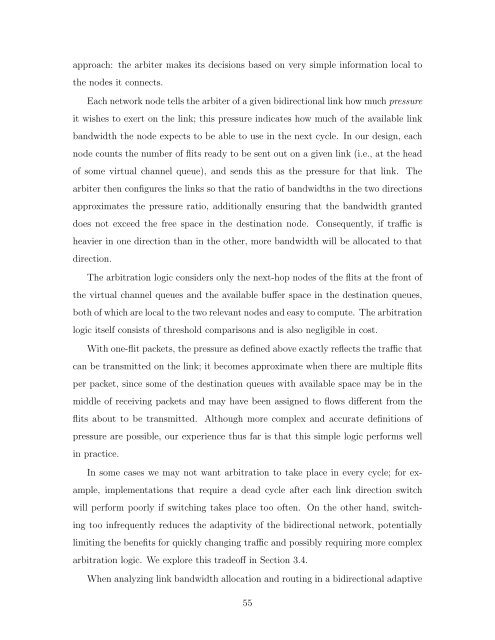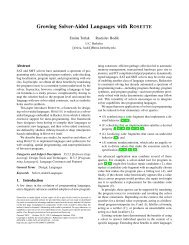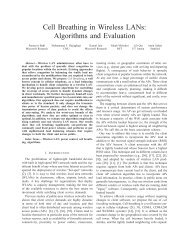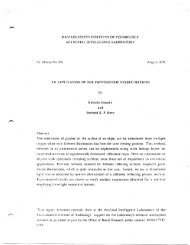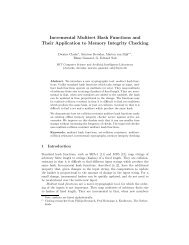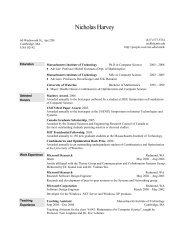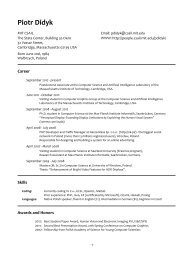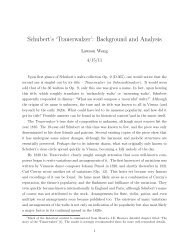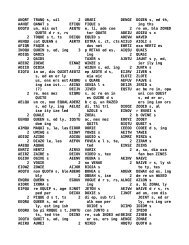On-chip Networks for Manycore Architecture Myong ... - People - MIT
On-chip Networks for Manycore Architecture Myong ... - People - MIT
On-chip Networks for Manycore Architecture Myong ... - People - MIT
Create successful ePaper yourself
Turn your PDF publications into a flip-book with our unique Google optimized e-Paper software.
approach: the arbiter makes its decisions based on very simple in<strong>for</strong>mation local to<br />
the nodes it connects.<br />
Each network node tells the arbiter of a given bidirectional link how much pressure<br />
it wishes to exert on the link; this pressure indicates how much of the available link<br />
bandwidth the node expects to be able to use in the next cycle. In our design, each<br />
node counts the number of flits ready to be sent out on a given link (i.e., at the head<br />
of some virtual channel queue), and sends this as the pressure <strong>for</strong> that link. The<br />
arbiter then configures the links so that the ratio of bandwidths in the two directions<br />
approximates the pressure ratio, additionally ensuring that the bandwidth granted<br />
does not exceed the free space in the destination node. Consequently, if tra c is<br />
heavier in one direction than in the other, more bandwidth will be allocated to that<br />
direction.<br />
The arbitration logic considers only the next-hop nodes of the flits at the front of<br />
the virtual channel queues and the available bu↵er space in the destination queues,<br />
both of which are local to the two relevant nodes and easy to compute. The arbitration<br />
logic itself consists of threshold comparisons and is also negligible in cost.<br />
With one-flit packets, the pressure as defined above exactly reflects the tra c that<br />
can be transmitted on the link; it becomes approximate when there are multiple flits<br />
per packet, since some of the destination queues with available space may be in the<br />
middle of receiving packets and may have been assigned to flows di↵erent from the<br />
flits about to be transmitted. Although more complex and accurate definitions of<br />
pressure are possible, our experience thus far is that this simple logic per<strong>for</strong>ms well<br />
in practice.<br />
In some cases we may not want arbitration to take place in every cycle; <strong>for</strong> example,<br />
implementations that require a dead cycle after each link direction switch<br />
will per<strong>for</strong>m poorly if switching takes place too often. <strong>On</strong> the other hand, switching<br />
too infrequently reduces the adaptivity of the bidirectional network, potentially<br />
limiting the benefits <strong>for</strong> quickly changing tra c and possibly requiring more complex<br />
arbitration logic. We explore this tradeo↵ in Section 3.4.<br />
When analyzing link bandwidth allocation and routing in a bidirectional adaptive<br />
55


